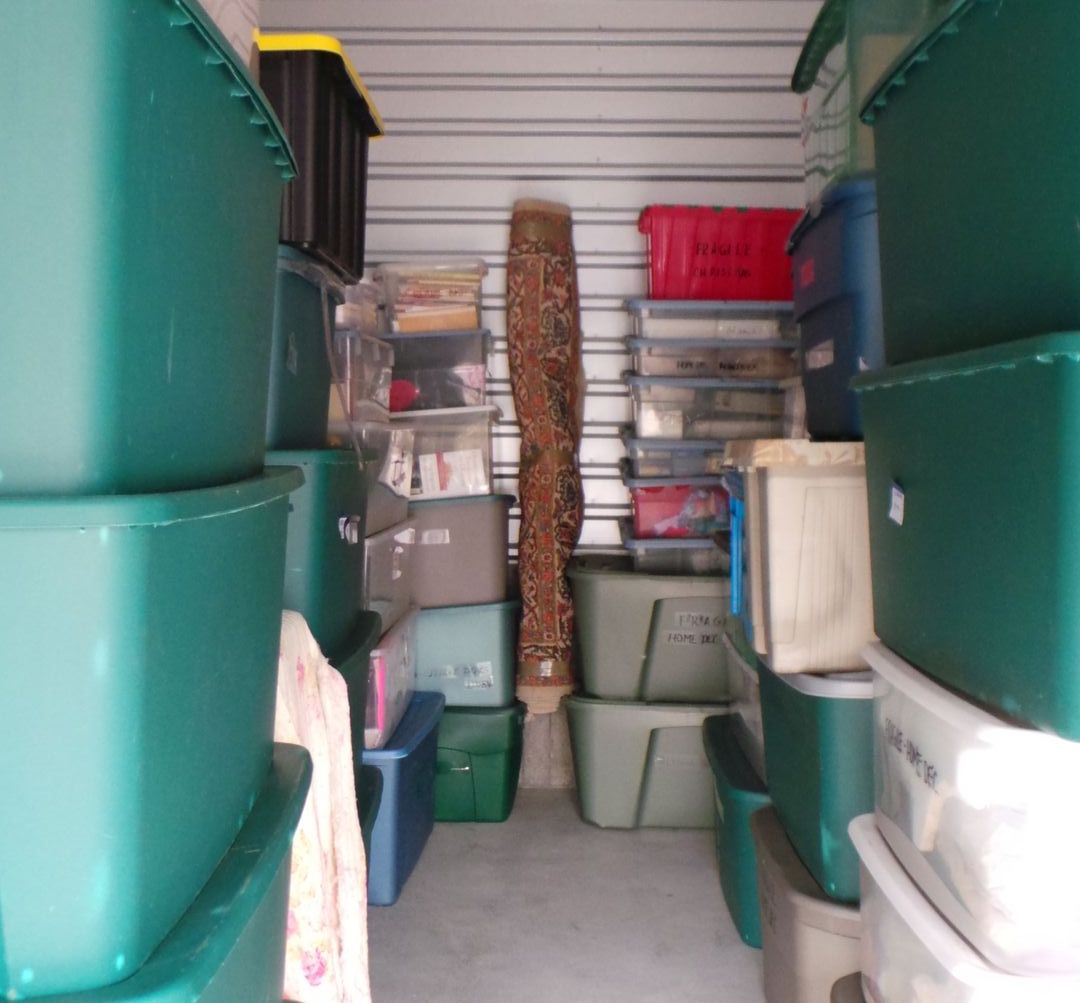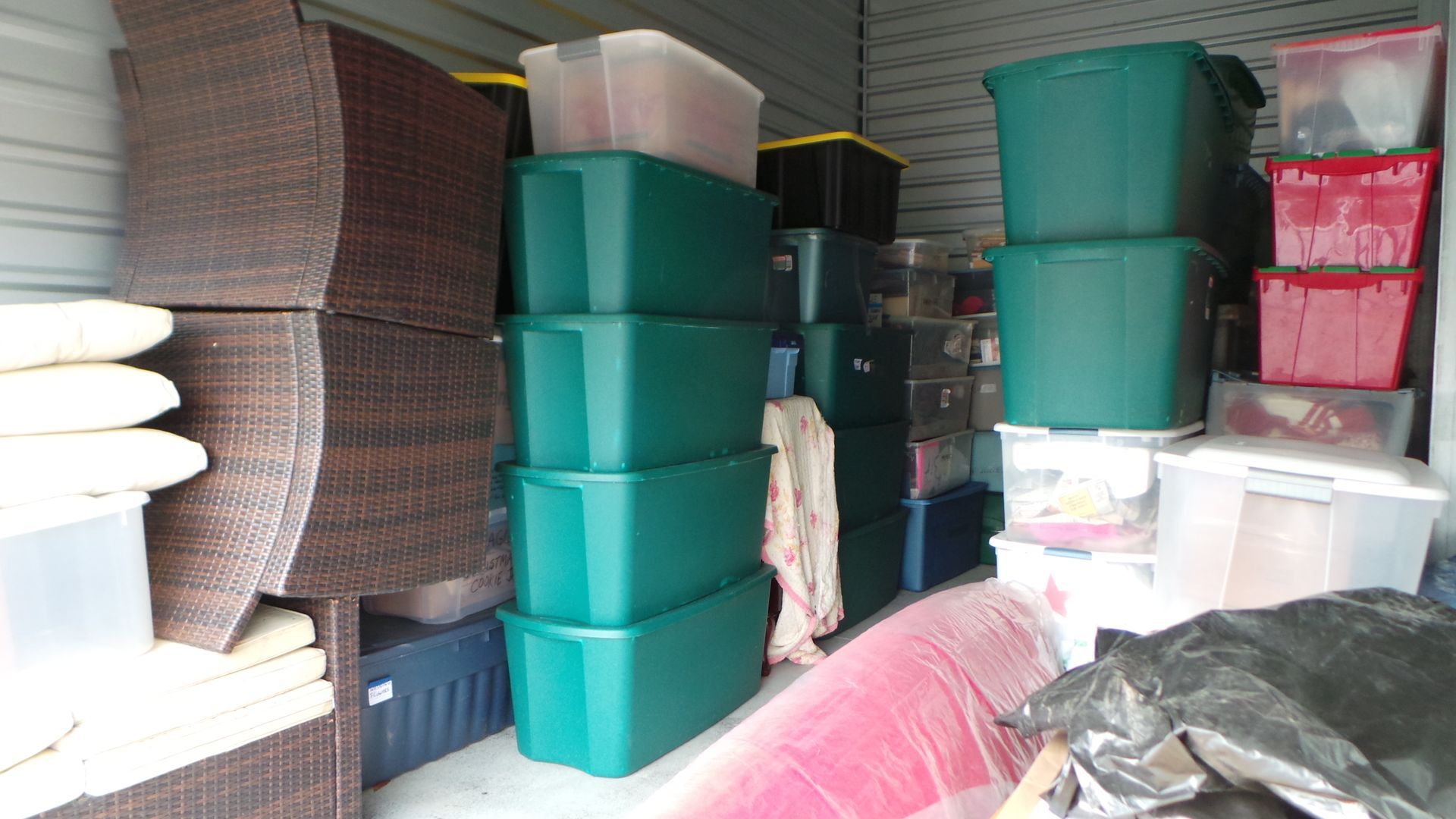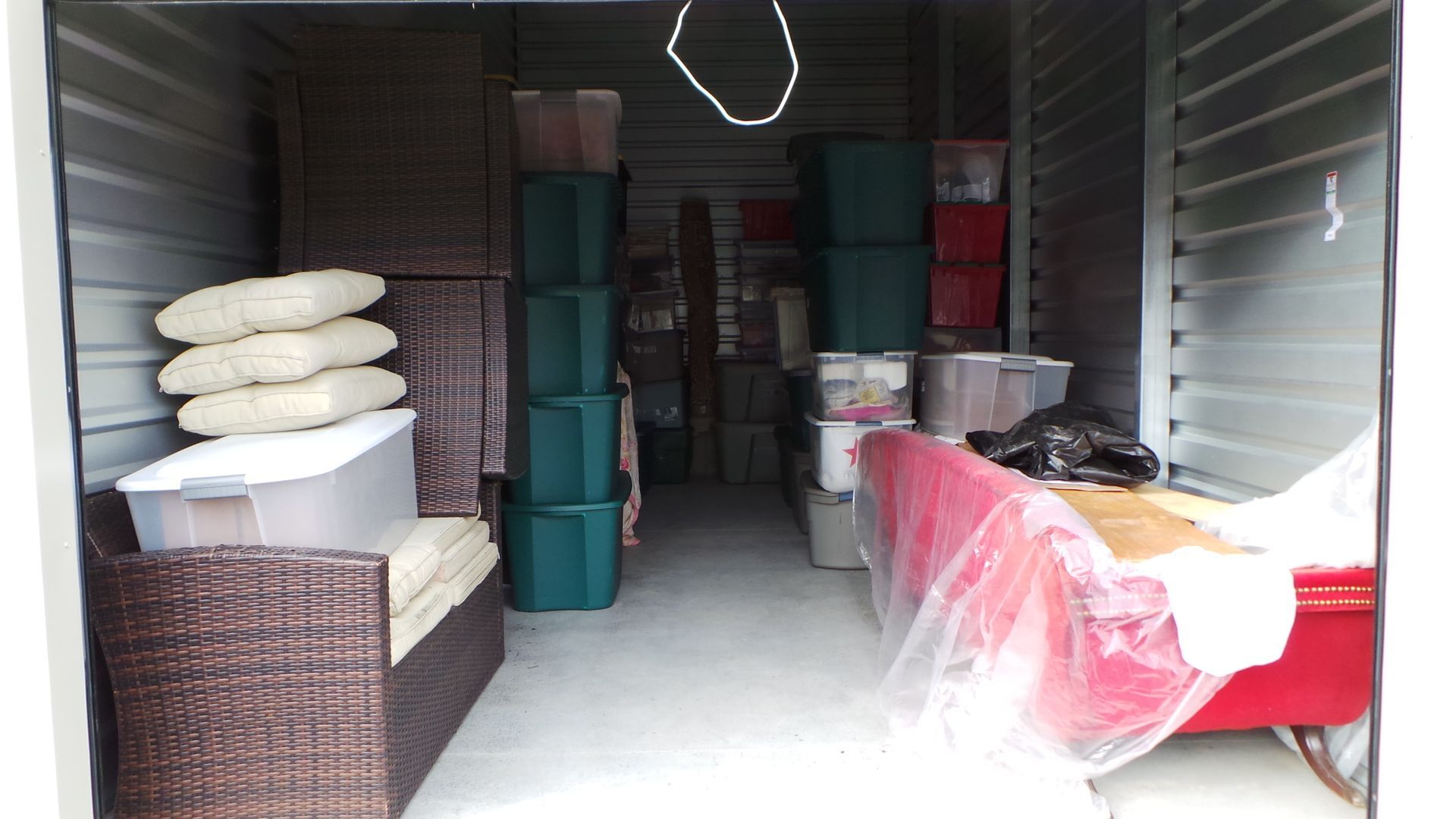Tips to Pack Your Unit Properly

- Carefully plan your storage space. Place items that you need easy access to or first in the front of your unit. Plan walkways in larger units.
- Make a complete inventory of all your stored items. List the contents of boxes on 3 x 5 index cards (instead of on each box). Number the boxes to match card numbers. Keep index cards in a safe convenient place for use when unpacking.
- Use uniform boxes that you can easily stack placing heaviest boxes on the bottom. Fill boxes to their maximum capacity to avoid collapsing.
- Do label fragile boxed items as such.
- Never store food in your space. Packaged food will attract pests. Canned food may freeze, expand or leak. Check clothing pockets for candy.
- Clean and dry refrigerators/freezers thoroughly to prevent mildew. Wedge doors open while in storage. Use the space inside appliances and drawers inside furniture to store smaller items.
- Disassemble large furniture as much as possible. Put screws and hardware in a plastic bag, label and attach to furniture for easier reassembly.
- Never store anything in sealed-plastic bags, especially in non-climate-controlled storage. The humidity may cause damage to your belongings.
- Wax wood furniture before storing to help avoid moisture damage.
- Stack sofas and loveseats on end to save floor space. If you stand mattresses on their side, prop them up to stay straight to prevent bending out of shape. Clean vacuumed cushions should be placed on top of furniture.
- Place a drop cloth over your belongings to help protect from dust.
- At least once per month, visit your unit. Let new air circulate through.







